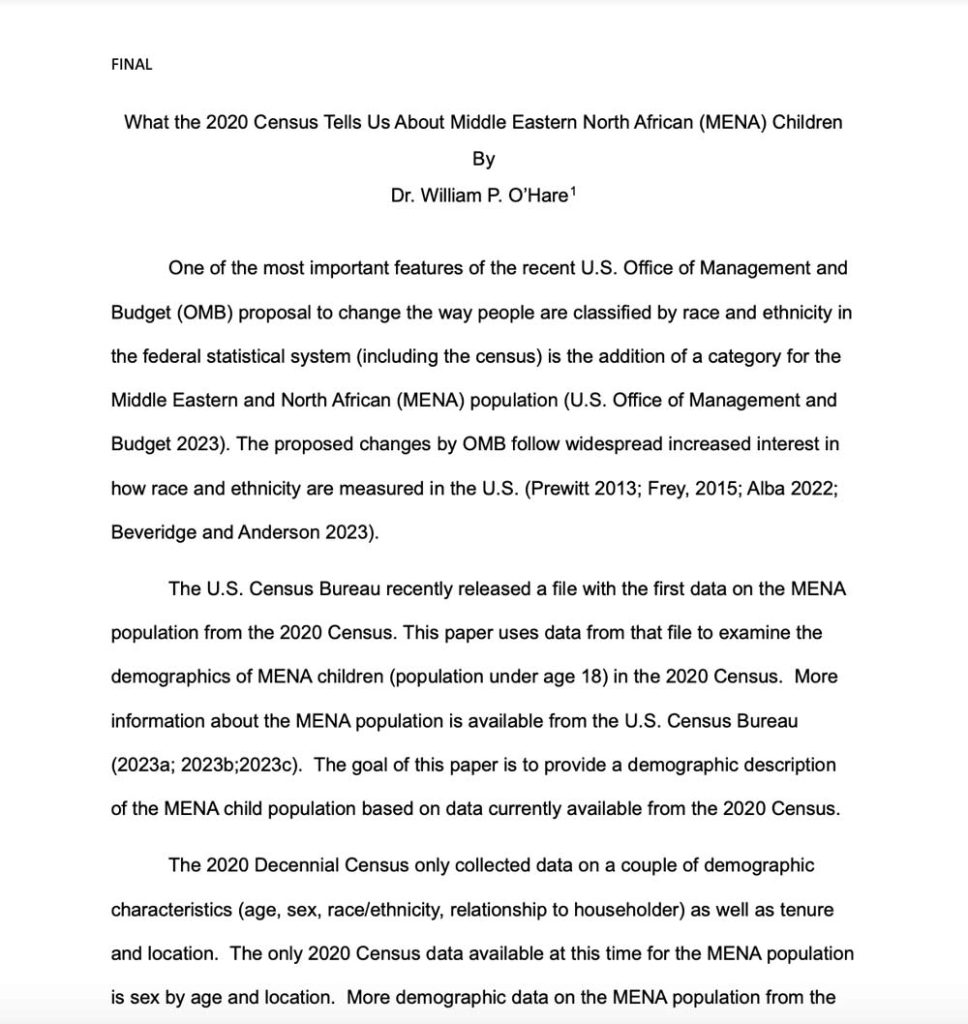One of the most important features of the recent U.S. Office of Management and Budget (OMB) proposal to change the way people are classified by race and ethnicity in the federal statistical system (including the census) is the addition of a category for the Middle Eastern and North African (MENA) population. The proposed changes by OMB follow widespread increased interest in how race and ethnicity are measured in the U.S.
The U.S. Census Bureau recently released a file with the first data on the MENA population from the 2020 Census. This paper uses data from that file to provide a demographic description of the MENA child population based on data currently available from the 2020 Census. More information on the MENA population will be released by the Census Bureau in 2024.
This report looks at the population included under the MENA category using the Census Bureau definition of MENA. Some data are available separately for some of the MENA subgroups, such as Djiboutians or Mauritanians. Appendix A in the paper lists the subgroups included as part of the MENA population according to the Census Bureau. Appendix B provides a list of the subgroups who the Arab American Institute considers to be part of the MENA population. The two lists are similar but not completely overlapping.









